Windows OS Deployment via Ansible AWX Server on ESX Enviroment
Hi all, yes it has been a while since my last publish but believe me, in this days , I mean at home office working times. I am working harder and much busy than office working times.
This post I would like to share how to automatize my Windows OS installations on ESX environment via Ansible AWX system.
For this automation steps we need some knowledge about the tools and environment. I will not explain how to install the system or detailed explanation about the systems, I will give you some descriptions , you need follow the documents and learn the tools basics.
What is AWX;
You can find many documents at the internet about it but github project page simple explanation is ; “AWX provides a web-based user interface, REST API, and task engine built on top of Ansible. It is the upstream project for Tower, a commercial derivative of AWX. ” You will find many detailed how to documents about it at “https://github.com/ansible/awx”
What is Ansible ;
Ansible is an IT automation tool. It can configure systems, deploy software, and orchestrate more advanced IT tasks such as continuous deployments or zero downtime rolling updates. Source Ansible Documentation page
What is VMware ESX;
Most of IT people has deep knowledge what is this and how to manage it. Yes most popular Hardware Virtualization solution for corporate IT environment . You can find the latest updates on this page about it.
Lets Continue with the Windows OS Installation steps;
This is the general view of the AWX dashboard.
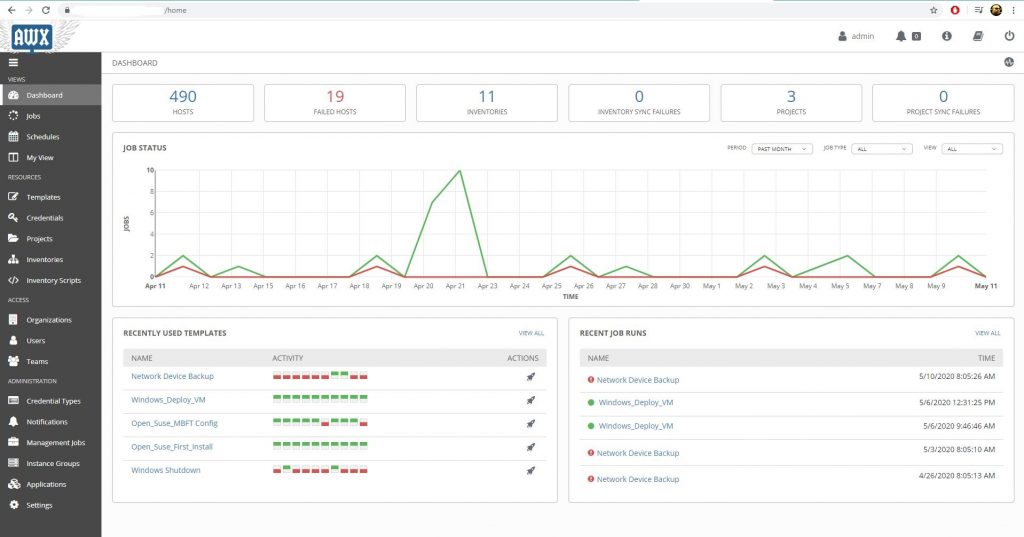
First things first , Lets start with ESX Vcenter access credentials, that user need to have full admin rights on ESX system.
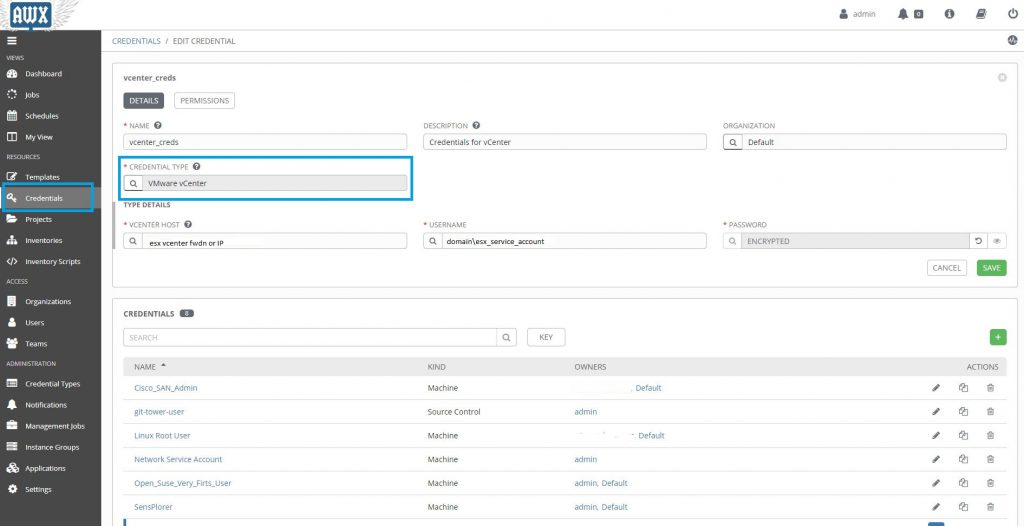
Now for source code management we need to create a project on AWX. I am storing the yaml codes on our corporate github.
You need also create credentials for github access to download yaml codes. Same as esxvcenter access cred.
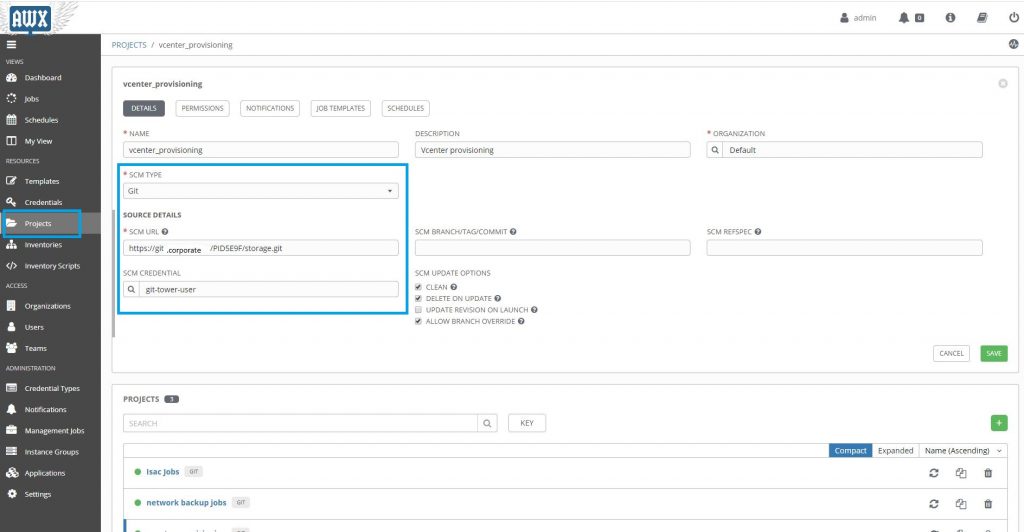
Now we need a dummy inventory group for esx server access . Dummy inventory is just an empty inventory group.
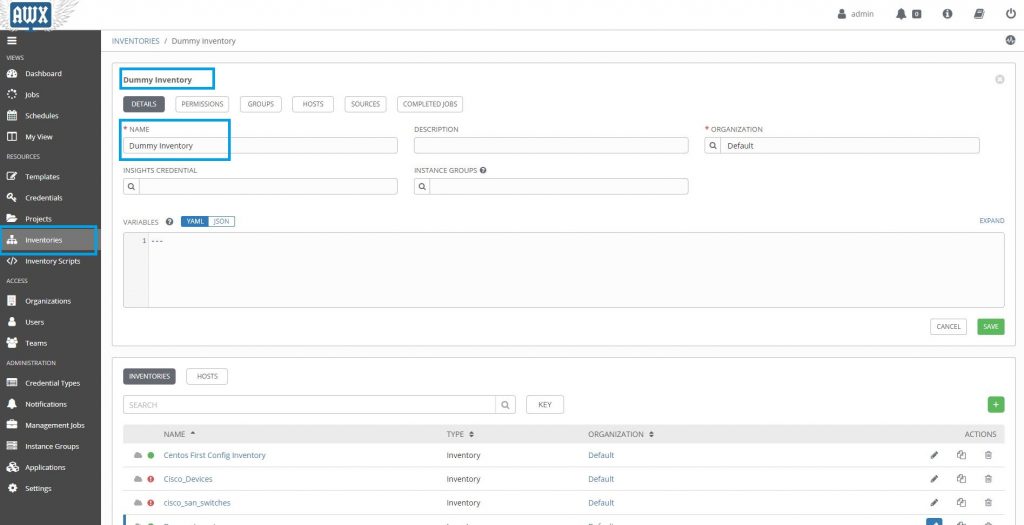
Now time to create a template for our windows OS deploy job. In this section we need to choose which inventory group will use for this, which project will use for the yaml codes group and which yaml playbook code file should use for it.
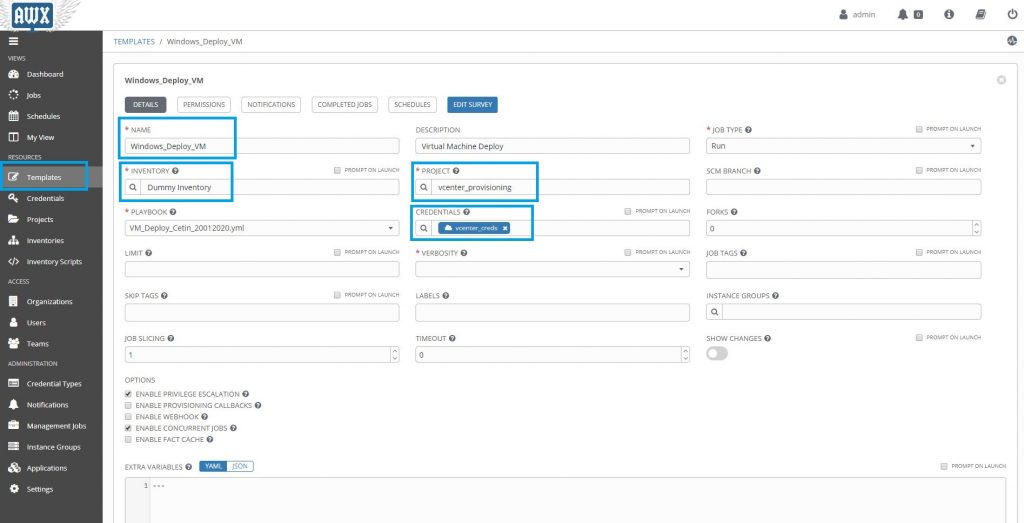
Let me share my playbook yaml file with you for give you some idea about the Virtual Windows OS deployment.
I am sharing the code as downloadable file because yaml file indents very important so web site copy paste could harm the indents.
---
- name: Create VM Instance
hosts: localhost
connection: local
gather_facts: false
tasks:
- name: Check if all variables have been defined
fail:
msg: "{{ item }} is not defined"
when: "{{ item }} is not defined"
with_items:
- datacenter
- cluster
- folder
- vmname
- datastore
- vlan_name
- template
- ip
- netmask
- gateway
- dns1
- dns2
- template
- vm_password
- fqdn_domain
- domain_join_account
- domain_join_password
- name: Create a VM from a template
vmware_guest:
hostname: '{{ lookup("env", "VMWARE_HOST") }}'
username: '{{ lookup("env", "VMWARE_USER") }}'
password: '{{ lookup("env", "VMWARE_PASSWORD") }}'
datacenter: "{{ datacenter }}"
cluster: "{{ cluster }}"
folder: "{{ folder }}"
validate_certs: no
name: "{{ vmname }}"
template: "{{ template }}"
# wait_for_ip_address: no
datastore: "{{ datastore }}"
# - name: Add NIC to VM
# ovirt_nic:
# state: present
# vm: "{{ vmname }}"
# name: "{{ vlan_name }}"
# interface: vmxnet3
# mac_address: 00:1a:4a:16:01:56
# profile: ovirtmgmt
# network: ovirtmgmt
state: poweredon
networks:
- name: "{{ vlan_name }}"
device_type: vmxnet3
start_connected: yes
ip: '{{ ip }}'
netmask: "{{ netmask }}"
gateway: "{{ gateway }}"
dns_servers:
- "{{dns1}}"
- "{{dns2}}"
wait_for_ip_address: yes
customization:
autologon: yes
hostname: "{{ vmname }}"
password: "{{ vm_password }}"
domainadmin: "{{ domain_join_account }}"
domainadminpassword: "{{ domain_join_password }}"
joindomain: "{{ fqdn_domain }}"
runonce:
- C:\Windows\System32\cmd.exe /c "C:\Ansible_Workaround\domain_group.cmd"
register: deploy_vm
ignore_errors: yes
- name: Result of Virtual machine
debug:
var: deploy_vm
when you check the code you will see defined couple of variables in this code like ; datacenter,cluster,folder,ip,template etc..
We need the answer this variables at the AWX system. For this purpose we need to reedit the template and define survey for it. Every step of this survey need to answer in the code. for example “fqdn_domain” check the screenshot.
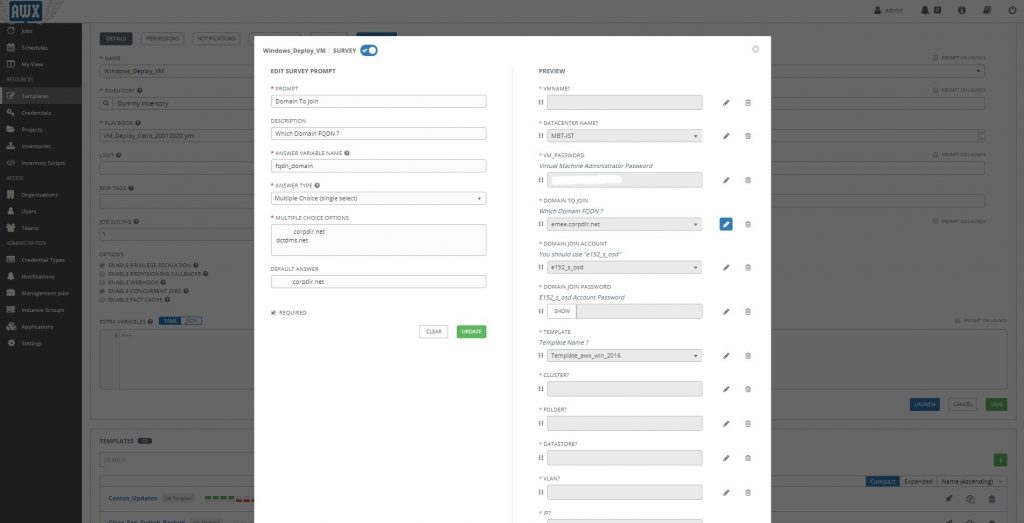
Now we need a Virtual Machine Template for the deployment usage. I have created many templates for this purpose for every Windows OS versions.
As you know ESX enviroment can generalize the cloned template to machine. We are triggering this option automatically while cloning the machine.
The important point is in that template you need to install vmtools. Because awx tells the operation steps to the esx, esx customizing the Windows OS via vmtools.
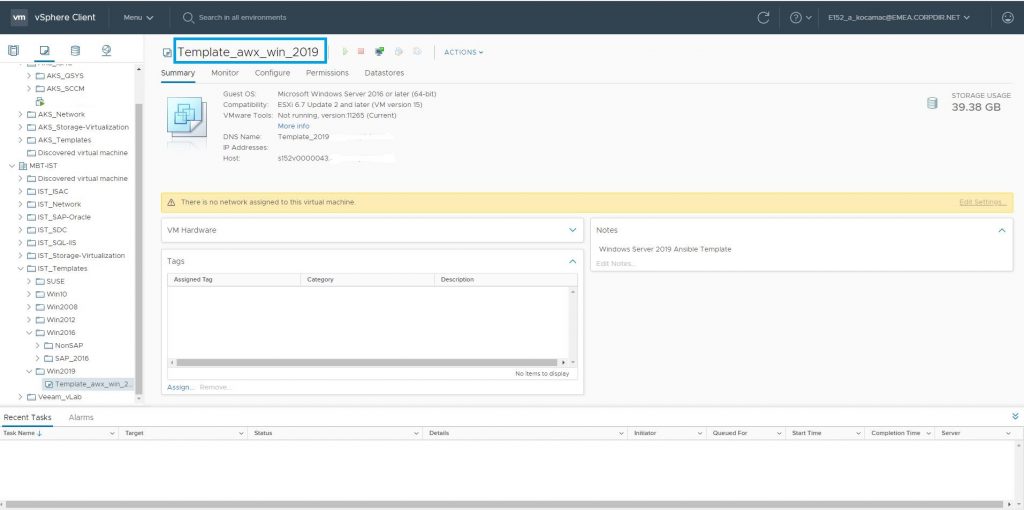
On my environment I am not a domain admin group member. I am a member of specific OU admin group , that’s why I have put a small run ones script to template machine “C:\Ansible_Workaround\domain_group.cmd”
@echo off net localgroup administrators domain\OU_Admins /ADD TZUTIL /s "Turkey Standard Time"
Lets demonstrate a deployment;
First go to template and check it ones more; If everything seems OK, press the rocket icon and start the deployment. Answer the questions about the VM name, Ip,Gateway,LocalAdmin Passwords etc.
After it click the deploy. It start to deploy and depend about your environment speed , it will take time about ten minutes.
If you success you will see a screen like that;
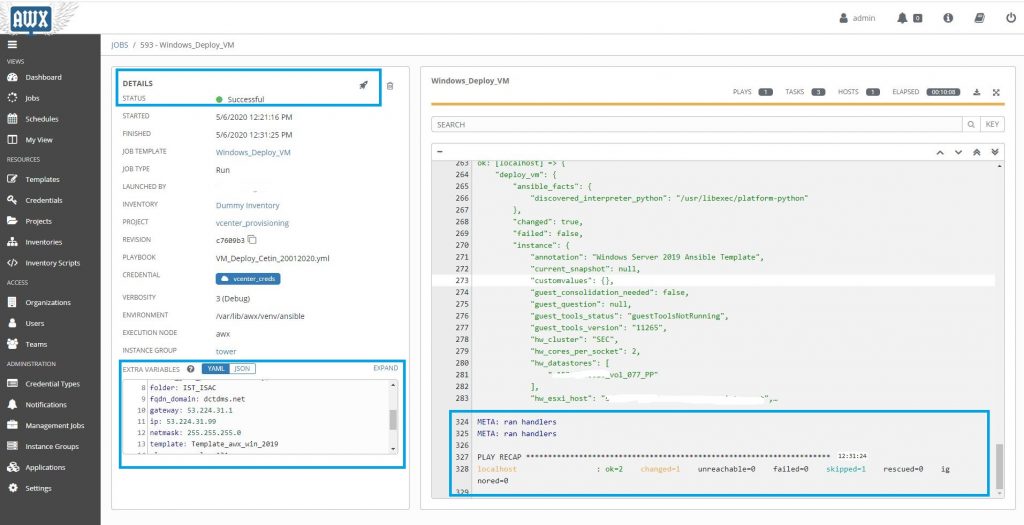
I hope , This document will help you have an idea about the ansible AWX and Windows deployment process.
Conclusion ;
Ansible is a big sea in IT world. If you learn how to sail in it , you will find many automation variations for your daily job. For example; I am using it take Cisco Switch backups in every week more than hundred device. May be it will be another story on this blog.
I would like to special thanks to my colleague Tolga Asik for his cooperation with his VM knowladge and also Mustafa Sarı with his storage knowledge.